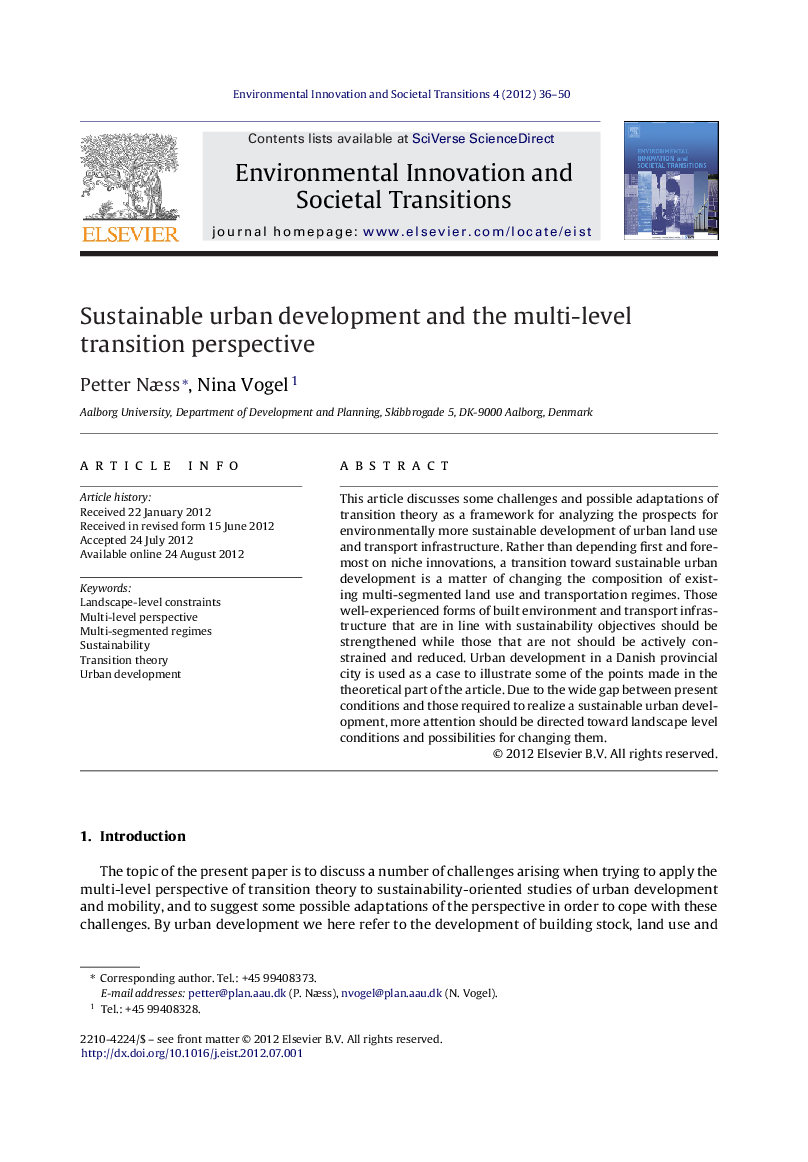| Article ID | Journal | Published Year | Pages | File Type |
|---|---|---|---|---|
| 108294 | Environmental Innovation and Societal Transitions | 2012 | 15 Pages |
This article discusses some challenges and possible adaptations of transition theory as a framework for analyzing the prospects for environmentally more sustainable development of urban land use and transport infrastructure. Rather than depending first and foremost on niche innovations, a transition toward sustainable urban development is a matter of changing the composition of existing multi-segmented land use and transportation regimes. Those well-experienced forms of built environment and transport infrastructure that are in line with sustainability objectives should be strengthened while those that are not should be actively constrained and reduced. Urban development in a Danish provincial city is used as a case to illustrate some of the points made in the theoretical part of the article. Due to the wide gap between present conditions and those required to realize a sustainable urban development, more attention should be directed toward landscape level conditions and possibilities for changing them.
► The MLP must be translated when applying it to transitions toward sustainable urban structures. ► Such transitions require changed compositions of existing regimes rather than niche innovations. ► Questioning the growth paradigm requires a radically different focus than on niche innovations. ► More attention for changing landscape conditions hampering sustainable transitions is needed. ► The scenario method of backcasting should be integrated into the analytical transition framework.
